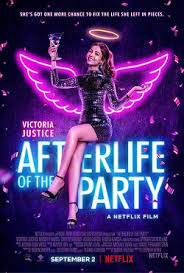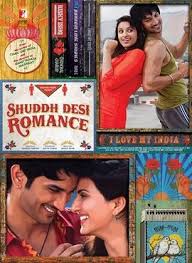If you ever wanted a comedy that blends the whimsical with a heartfelt afterlife journey, this one will certainly catch your attention. “Afterlife of the Party,” featuring Victoria Justice and Midori Francis, takes place in modern times, between the world of the living and an ethereal realm beyond. It’s a fantasy-comedy film, with an emotional undercurrent, that explores second chances and finding meaning in life (and afterlife).
The story follows Cassie, a bubbly, energetic party girl who loves living life to the fullest. But her partying ways come to a tragic halt when she suddenly dies. Waking up in the afterlife, she learns she has unfinished business and must make amends with her loved ones, particularly her estranged best friend, Lisa, and her parents. The plot weaves through her journey in the spirit world as she tries to reconcile her past and mend the broken relationships she left behind, all while injecting humor and poignant moments.
One standout aspect of the film is the strong performances by its lead actors, Victoria and Midori. Victoria, playing Cassie, captures the lighthearted, exuberant spirit of a party girl who refuses to let even death dull her energy. She adds a layer of charm and vulnerability to the role, especially in her softer moments of introspection when faced with the consequences of her past actions. Midori, as Lisa, is the more reserved, grounded friend, and the chemistry between the two actresses carries the emotional core of the film. The friendship between the two characters feels genuine, and Midori’s portrayal of Lisa’s grief and growth is both moving and believable, giving depth to the narrative.
Visually, the film is bright and lively, befitting its cheerful tone. The costume design, particularly for Cassie’s posthumous wardrobe, is creative and eye-catching, full of vibrant colors and playful outfits that match her larger-than-life personality. The afterlife is portrayed in an aesthetically appealing manner, with clean, dreamlike settings that contrast the real world. The special effects are not overly flashy, but they add a subtle supernatural touch to the scenes where Cassie interacts with the living, like the glowing auras and floating objects, making the otherworldly setting feel tangible without overwhelming the viewer.
The music and sound design complement the movie’s upbeat mood, with a mix of modern pop tracks that fit Cassie’s lively persona. The soundtrack helps elevate key moments, especially during her attempts to communicate with Lisa or when she relives some of her favorite party moments. The musical choices feel carefully selected to resonate with the film’s younger audience and enhance the whimsical, feel-good atmosphere.
While the film delivers plenty of laughs and heartwarming moments, it does lean heavily into clichés. The “unfinished business in the afterlife” trope isn’t new, and certain plot points feel predictable, like the inevitable reconciliation and life lessons learned along the way. However, the film’s charm lies in how it handles these familiar beats with humor and sincerity, making the journey enjoyable despite its familiarity. The pacing of the film, particularly in the second half, does become a bit sluggish, with certain emotional arcs feeling slightly rushed or underdeveloped. Yet, it manages to pull the viewer back in with its warm tone and lighthearted resolution.
Overall, the film is an enjoyable watch for those who love lighthearted comedies with a sprinkle of fantasy. Its exploration of themes like friendship, grief, and personal growth gives it a heartwarming quality, despite its somewhat predictable nature. If you’re looking for a feel-good movie that balances humor with emotional depth, this film offers a breezy escape. While it may not push any cinematic boundaries, it’s a charming film that knows how to tug at your heartstrings in all the right ways.







